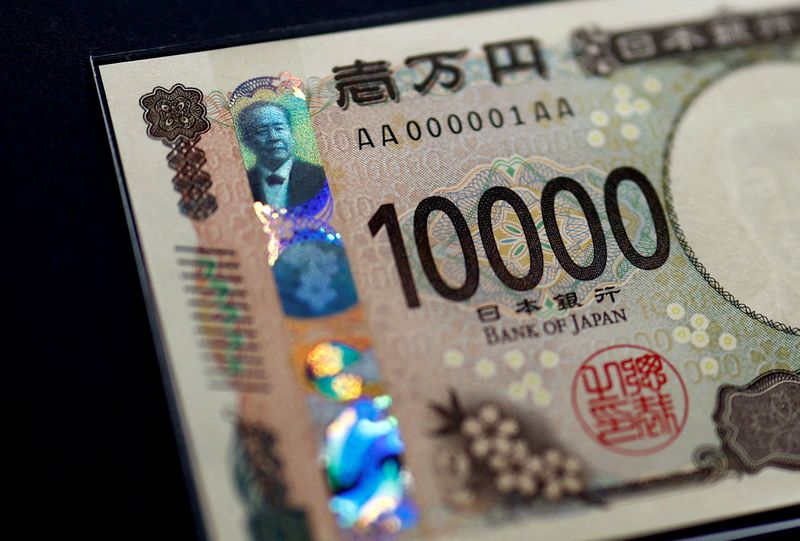By Wayne Cole and Harry Robertson
SYDNEY/LONDON (Reuters) -The dollar climbed against the yen on Monday after Japan's top central banker flagged further monetary policy tightening ahead but left open the question of timing, while the euro steadied after falling to a one-year low late last week.
Bank of Japan Governor Kazuo Ueda reiterated that interest rates would continue to rise gradually should the economy develop in line with the central bank's outlook, in his first opportunity to speak directly on monetary policy since Donald Trump's victory in the U.S. presidential election on Nov. 5.
However, he made no mention of whether a hike would come in December, saying the BOJ would need to pay attention to various risks, including for the U.S. economy.
The lack of clear guidance saw the dollar rise 0.62% to 155.12 yen and away from Friday's low of 153.86. It pulled back late last week after Japanese Finance Minister Katsunobu Kato on Friday put the market on warning of possible intervention if the yen fell too far and too fast.
"Market participants were watching closely to see if he would give any clear signal that the BoJ are planning on raising rates one more time this year," said Lee Hardman, currency analyst at MUFG. "However, Governor Ueda refrained from providing any clear signal."
The market was pricing a roughly 54% chance of a quarter-point hike at the next policy meeting on Dec. 19, little changed from before the speech.
Against a basket of currencies the dollar held at 106.77, having touched a one-year top of 107.07 on Friday. The index climbed 1.6% last week, marking six weeks of gains in the last seven.
The rally has coincided with a 70-basis-point surge in 10-year Treasury yields since the start of October, fuelling a 5.4% rise in the U.S. dollar index as U.S. bonds have become more attractive.
EURO STEADIES, EYES ON TARIFFS
The euro was last flat at $1.0537 , although it remained uncomfortably close to Thursday's one-year trough of $1.0496.
Trump's election victory has caused the euro to slump as investors have priced in the potential for tariffs on the European Union and China, a key European trading partner. Investors and analysts have begun to talk of a possible fall to parity, where one euro equals a dollar.
"If we're looking next year, I think it's fair to think we could be trading close to parity or at parity, it really depends on the implementation of the protectionist agenda by Trump," said Francesco Pesole, currency strategist at ING.
Markets are eager to hear who Trump will pick as Treasury Secretary, with numerous media reports saying the president-elect has extended the list of potential candidates to include former Federal Reserve governor, Kevin Warsh, and billionaire executive Marc Rowan.
Analysts generally assume Trump's touted policies of tariffs, reduced immigration and debt-funded tax cuts will be inflationary, limiting the scope for further rate cuts by the Federal Reserve.
Sterling has also suffered under the dollar's recent strength, dropping around 2.5% since the election, but held steady on Monday at $1.2622.

At least seven Fed officials are due to speak this week as well as a number of European central bankers.
The data calendar for the U.S. is light this week, but the UK, Japan and Canada all have important inflation reports due, while manufacturing surveys out late in the week will offer a clue to how sentiment is faring since the U.S. election.